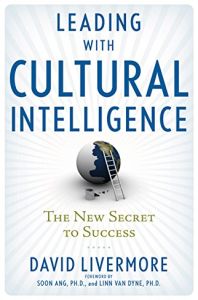Join getAbstract to access the summary!

Join getAbstract to access the summary!
David Livermore
Leading with Cultural Intelligence
The New Secret to Success
AMACOM, 2009
What's inside?
To climb to the top in today’s business environment, raise your cultural intelligence – the new leadership requirement.
Recommendation
The boundaries between countries and cultures blur more each day. After all, you can buy a Starbucks latte at the airport in Guam or Shanghai. Advances in communication, the Web and global expansion have made the world even smaller. But don’t be fooled, cautions consultant and trainer David Livermore. You can’t do business in São Paulo the same way as in Munich, even if you are drinking the same latte. Livermore doesn’t teach the customs and habits of various cultures. Instead, he provides a four-step framework for navigating cultural contexts. He identifies the four elements of CQ: “drive, knowledge, strategy and action.” Each one calls upon a set of skills you can apply whether you’re trying to relate to your teenager’s Goth friend, negotiate with a Mexican executive or open a new office in Israel. getAbstract thinks anyone who deals with people from varied cultures – and who doesn’t – will find this cross-cultural leadership guide as essential as a passport.
Summary
About the Author
David Livermore, Ph.D., is a global consultant and trainer specializing in cultural intelligence. He is the executive director of the Global Learning Center in Grand Rapids, Michigan.



















Comment on this summary